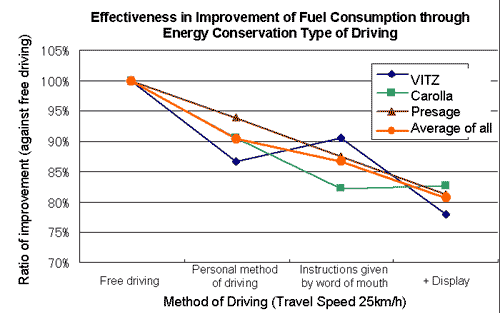Measures for
Reducing the Volume of Fuel Consumption of
Automobile

| AEEC Home | Training Index | Index | Top | Previous | Next |
| METI/ECCJ/AOTS Training Program | Indonesia |
|
Measures for
Reducing the Volume of Fuel Consumption of
Automobile |

|
|
Promotion of
Cars with the “Idling-Stop” System |
|||||||||||
|
|||||||||||
|
|
The Effectiveness
of Idling Stop 1 |
|||
Stopped Time
and Status of Implementation of Idling
Stop
|
|||
|
|
The Effectiveness
of Smart Drive (Eco-drive)- 1 Elements of Energy Conserving Driving Methods |
 |
|
The Effectiveness
of Smart Drive (Eco-drive)- 2 |
||

|
| 3/14 Next |
| AEEC Home | Training Index | Index | Top | Previous | Next |